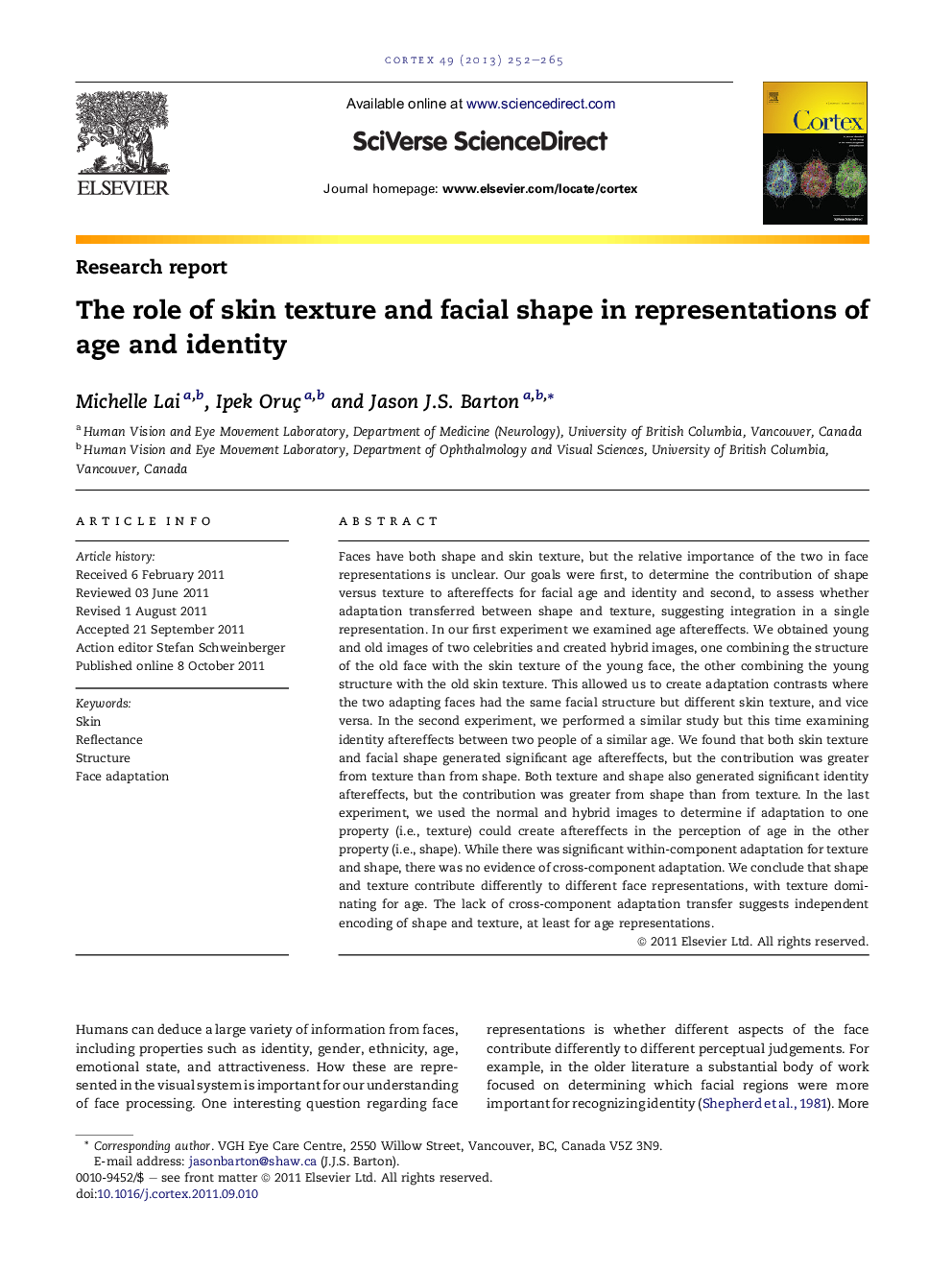| Article ID | Journal | Published Year | Pages | File Type |
|---|---|---|---|---|
| 942167 | Cortex | 2013 | 14 Pages |
Faces have both shape and skin texture, but the relative importance of the two in face representations is unclear. Our goals were first, to determine the contribution of shape versus texture to aftereffects for facial age and identity and second, to assess whether adaptation transferred between shape and texture, suggesting integration in a single representation. In our first experiment we examined age aftereffects. We obtained young and old images of two celebrities and created hybrid images, one combining the structure of the old face with the skin texture of the young face, the other combining the young structure with the old skin texture. This allowed us to create adaptation contrasts where the two adapting faces had the same facial structure but different skin texture, and vice versa. In the second experiment, we performed a similar study but this time examining identity aftereffects between two people of a similar age. We found that both skin texture and facial shape generated significant age aftereffects, but the contribution was greater from texture than from shape. Both texture and shape also generated significant identity aftereffects, but the contribution was greater from shape than from texture. In the last experiment, we used the normal and hybrid images to determine if adaptation to one property (i.e., texture) could create aftereffects in the perception of age in the other property (i.e., shape). While there was significant within-component adaptation for texture and shape, there was no evidence of cross-component adaptation. We conclude that shape and texture contribute differently to different face representations, with texture dominating for age. The lack of cross-component adaptation transfer suggests independent encoding of shape and texture, at least for age representations.
